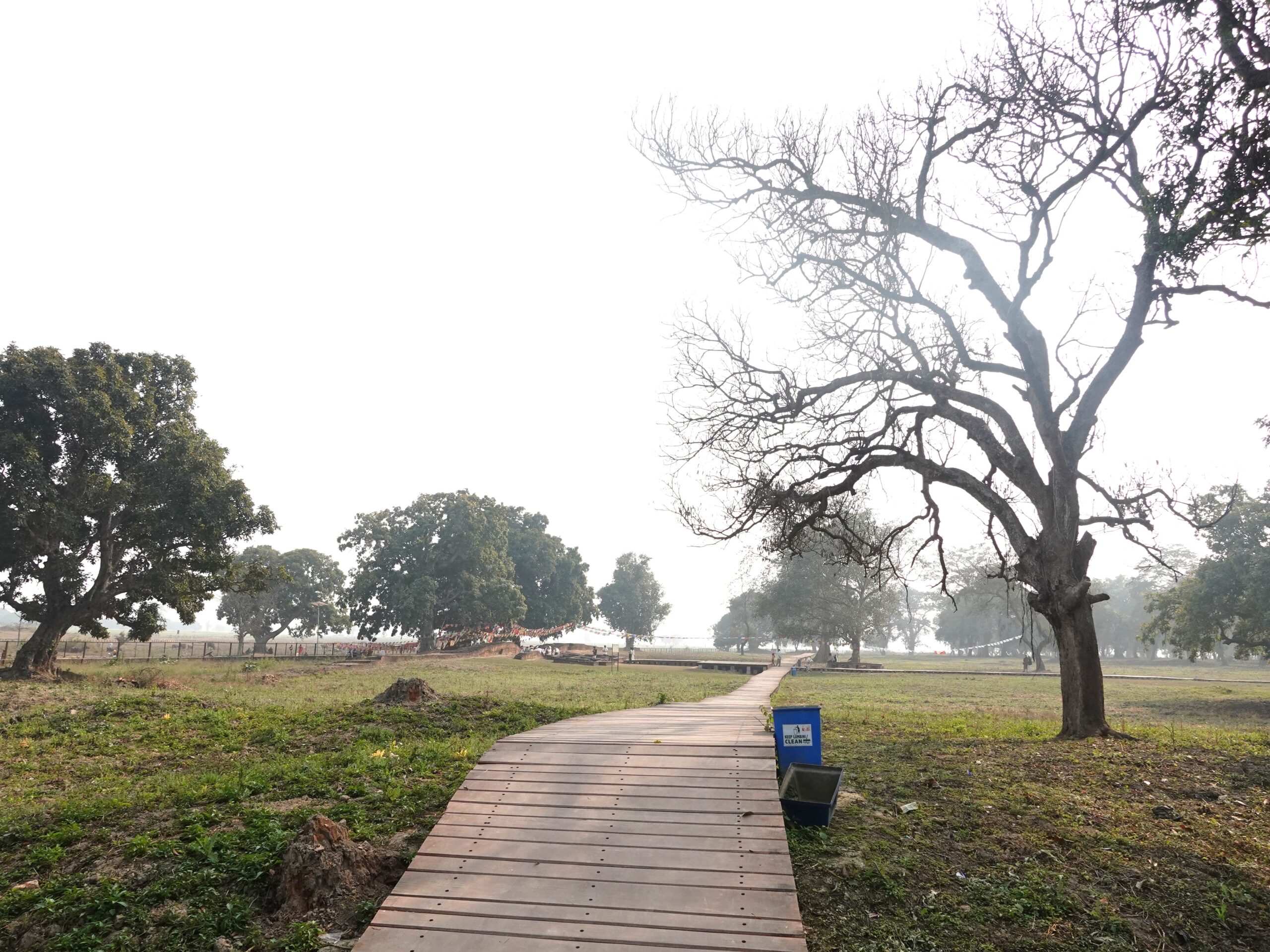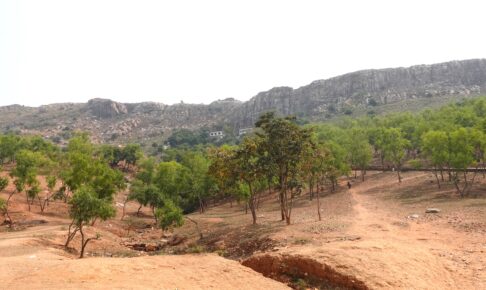The life of Buddha (Shakyamuni Buddha) as seen through local photographs] ⑷.
⑷ Visiting Kapilavastu, the Palace of the Shakas - My impressions of the city where the young Buddha spent his life.
Kapilavastu, where Buddha lived.
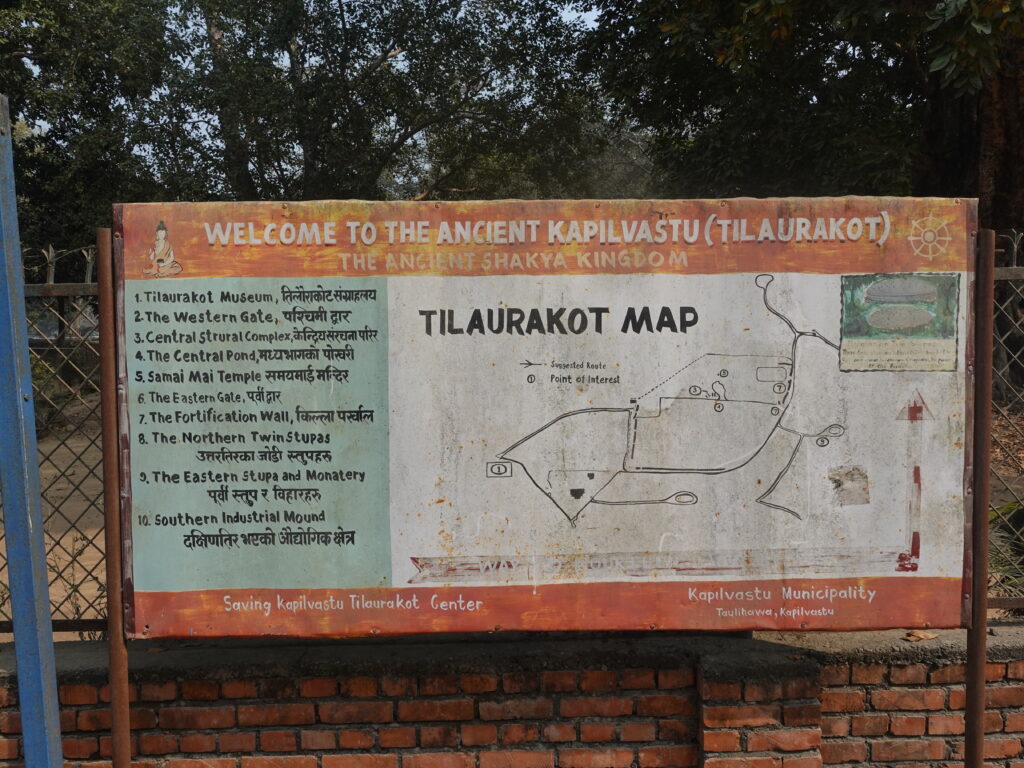
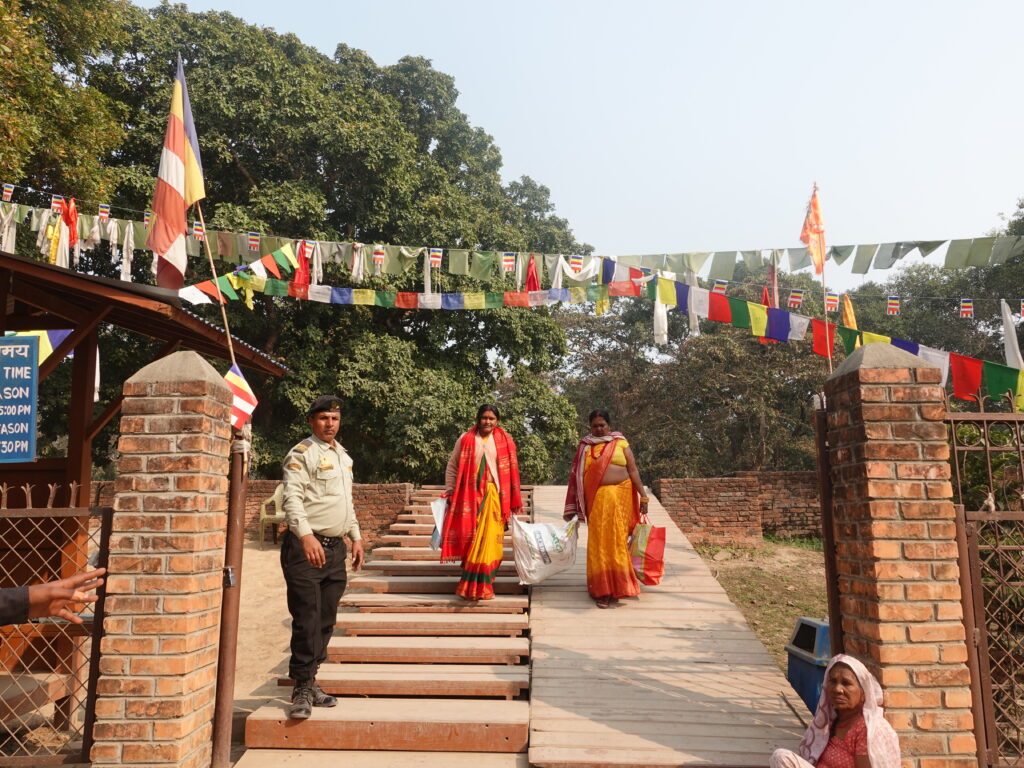
This is the entrance to Kapilavastu. Currently, visitors enter through the west gate of this archaeological site. The right photo is its west gate.
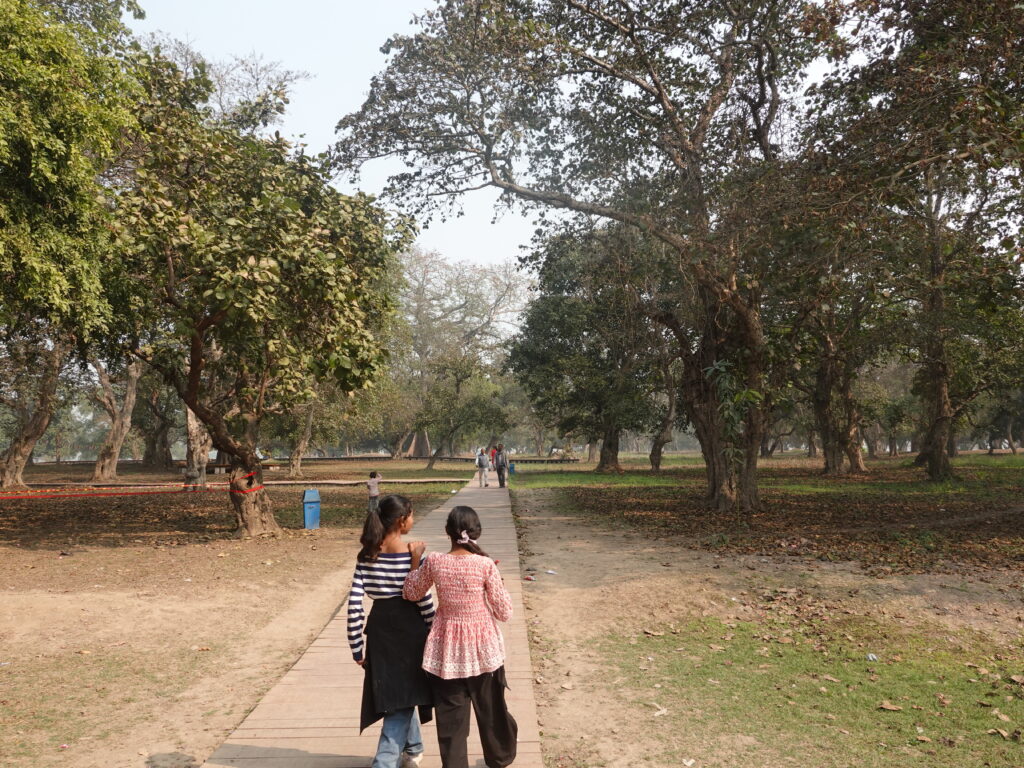
Inside, it is like a large park, and we walk along pathways made of wood.
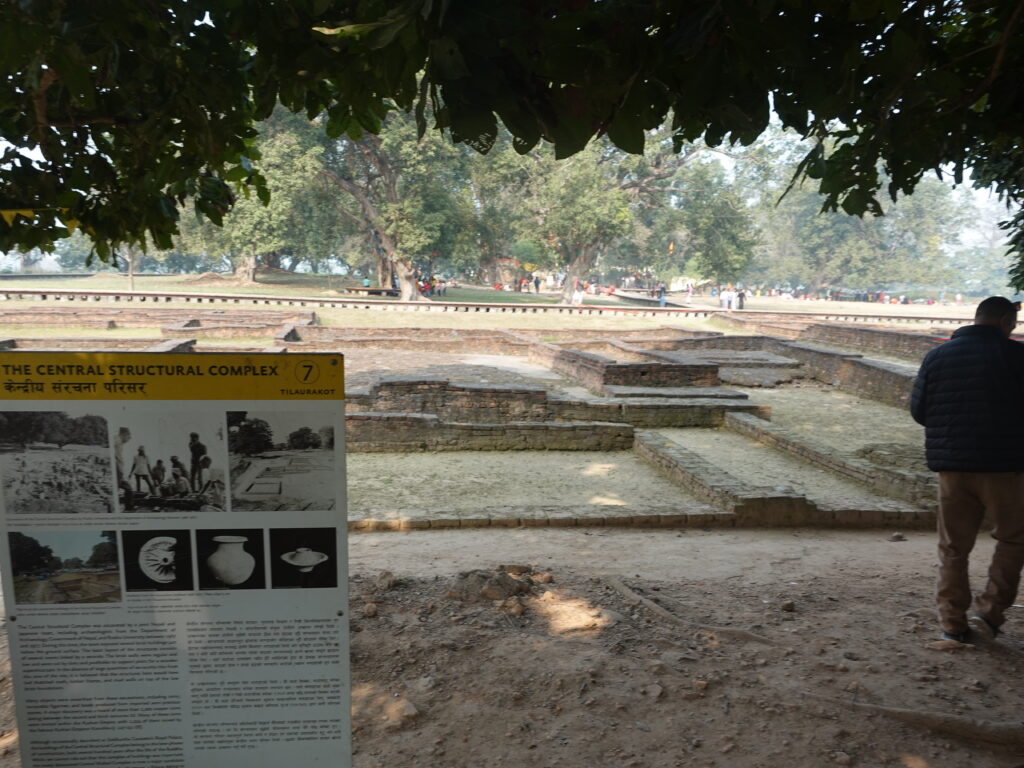
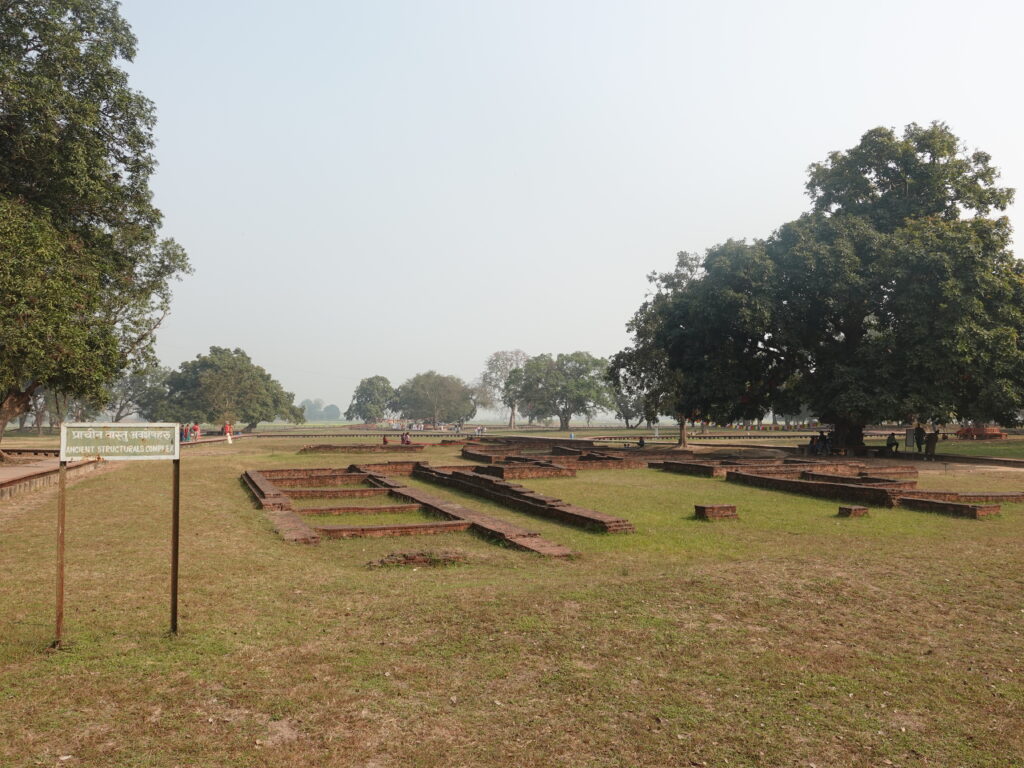
This is the site of the royal palace where King Suddhodana lived.
Across from it, there was a bathing pond that had been built on purpose for the Buddha.
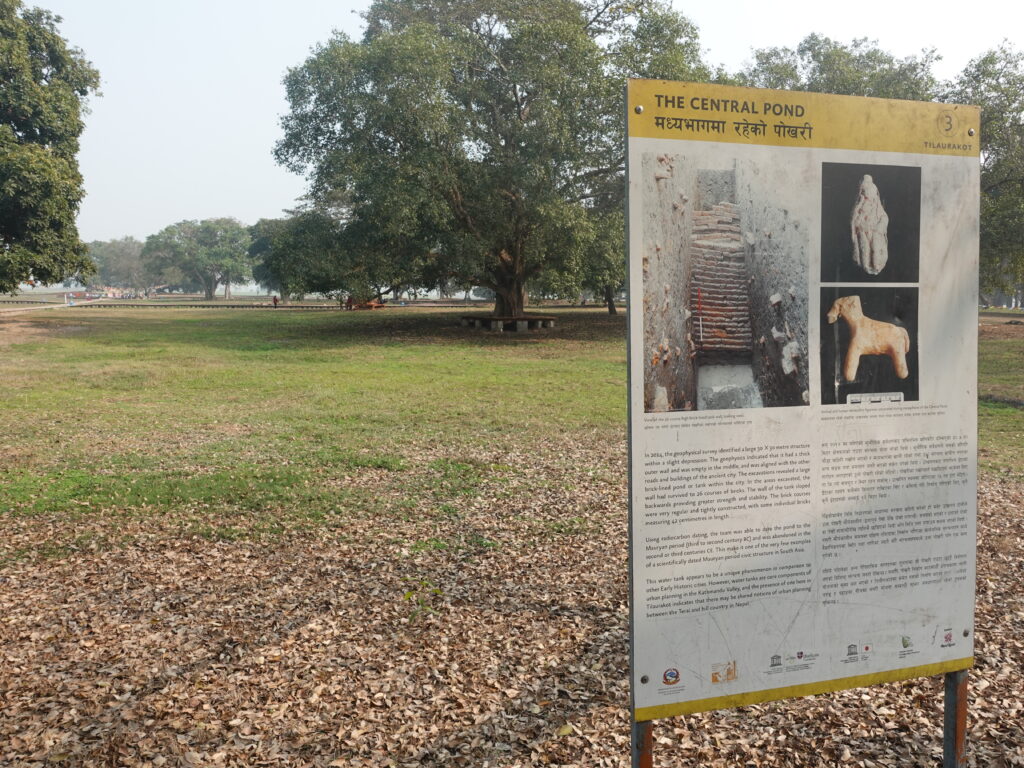
Just in front of the sign in the photo is the area where the pond used to be. After being excavated once, it was filled in again for conservation purposes and is in its current state. The site will be excavated again next year for another survey. A survey team from Japan is said to be involved in the investigation. It is hoped that new discoveries will be made.

This is the east gate of Kapilavastu. A group from Thailand was also with us.
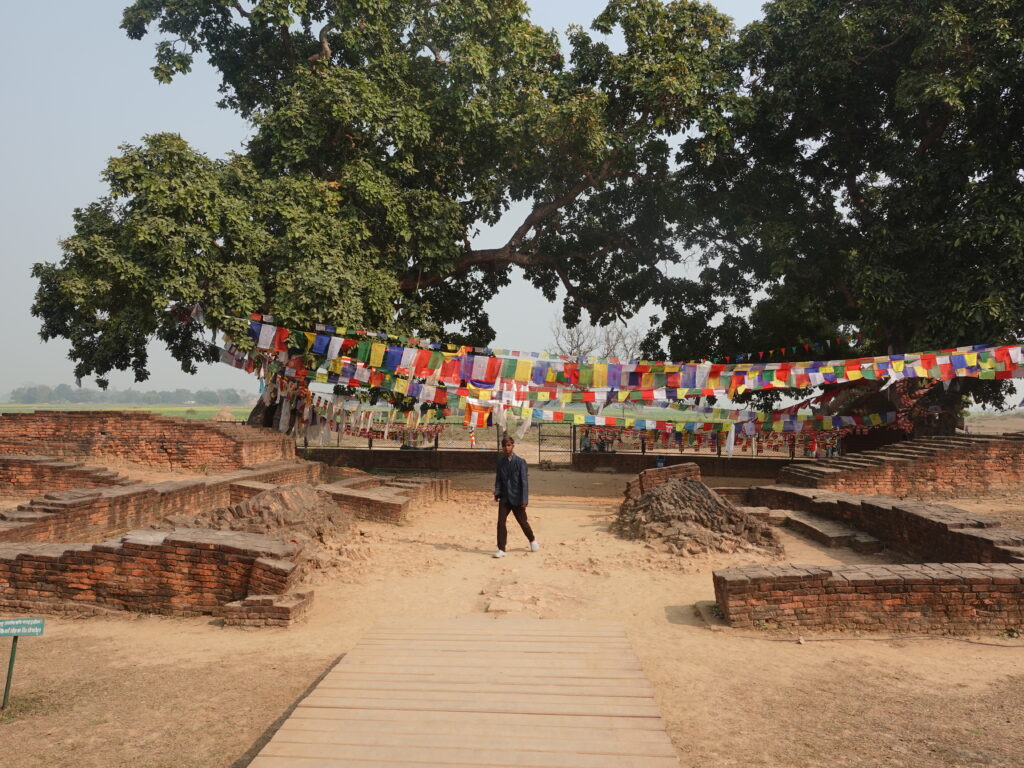
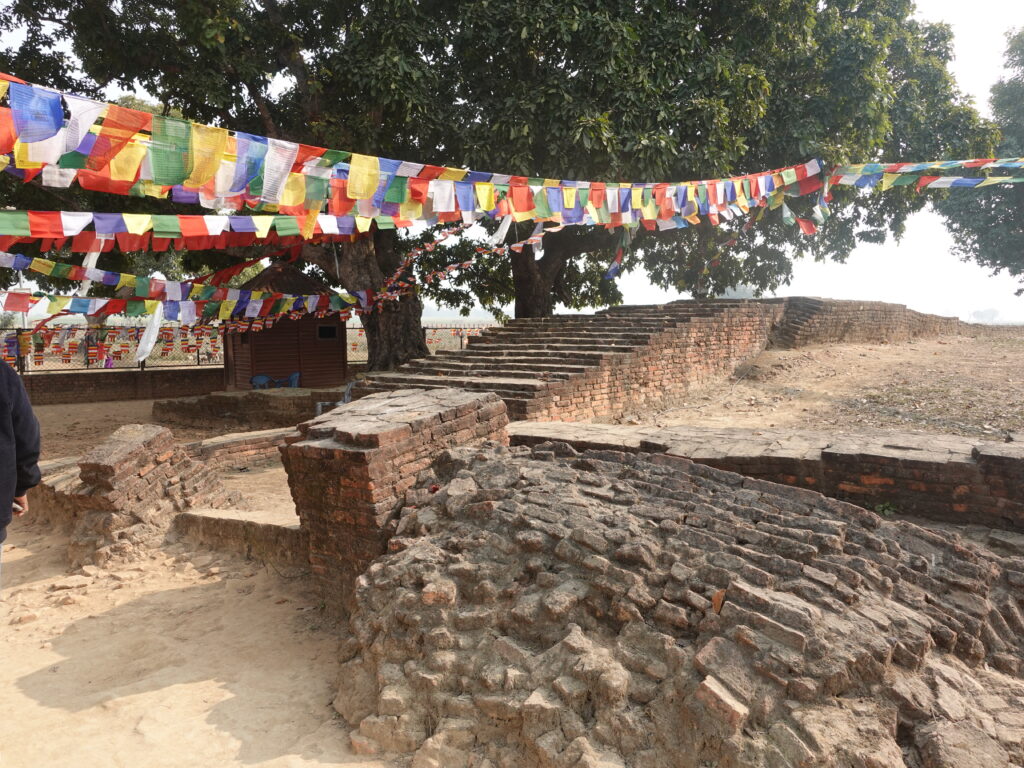
This East Gate is one of the sacred places for Buddhists, as Buddha went out from here when he was ordained.
The upper portion of the brickwork has been restored, but it gives a sense of how wide the walls of Kapilavastu once were.
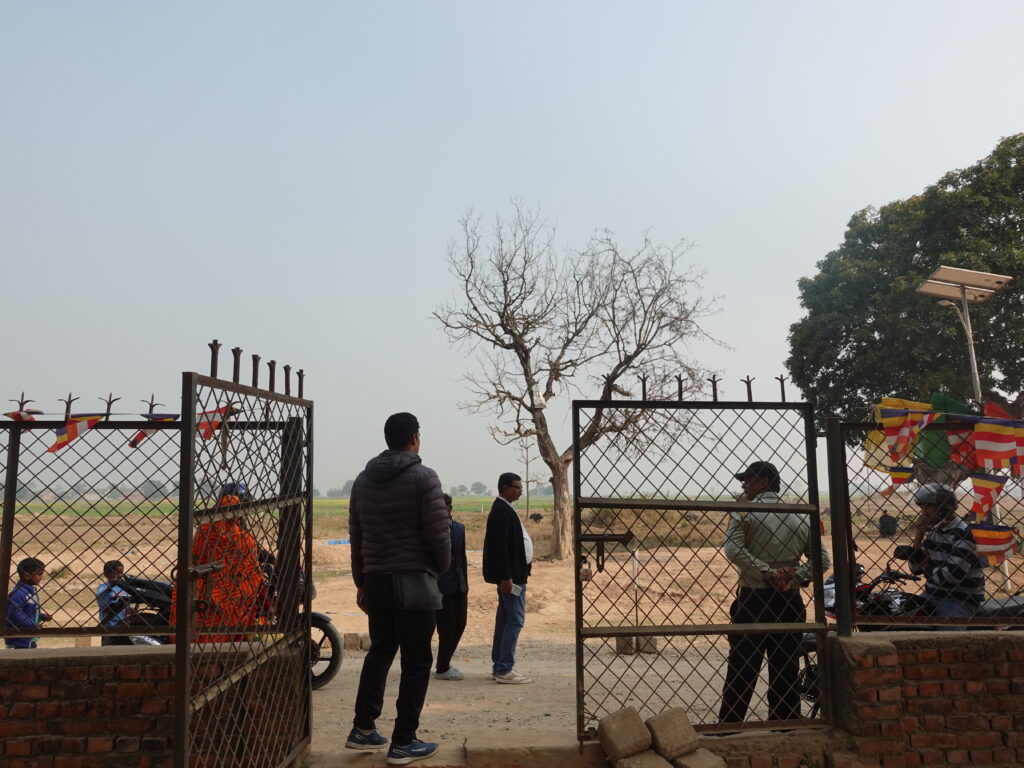
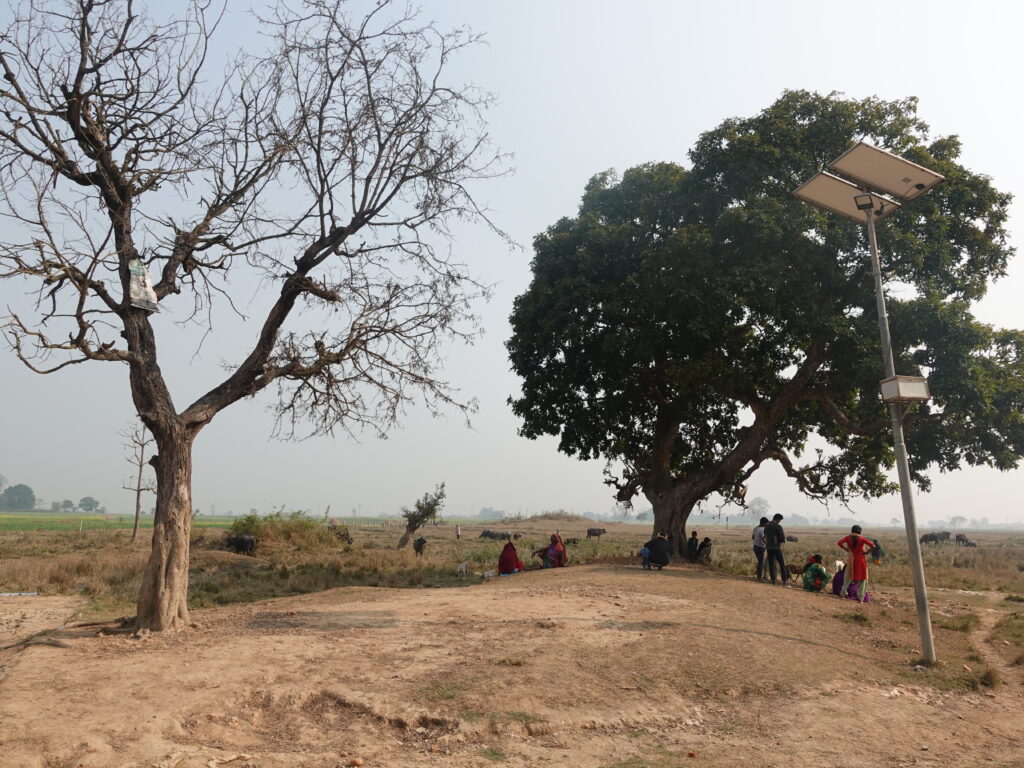
Beyond the east gate is a field, and it is said that a little further on is the mound of Kantaka, Buddha's beloved horse. We await the results of further investigation.
Nepal is economically poor, and research and environmental development have yet to catch up. In recent years, the construction of Bhairahawa Airport near Lumbini has made tourism more convenient, but it is still not enough. However, it is also true that the convenience of tourism has increased dramatically compared to a few decades ago, and I confirmed that road construction was still underway as of February 2024, the date of my visit. As I mentioned earlier, I am very much looking forward to seeing how next year's survey will turn out.
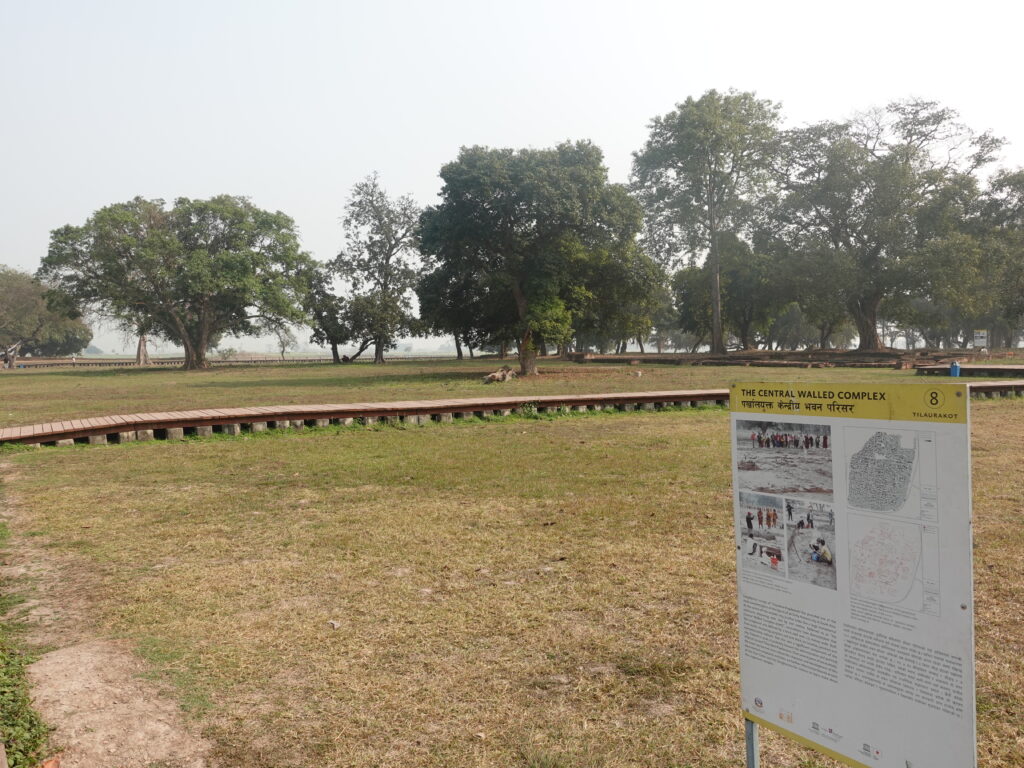
And the plot in this photo is where one of Buddha's palaces is said to have been located.
To be honest, I was quite surprised by this. This plot is located right in front of the palace of King Suddhodana, which I introduced earlier. Moreover, when I actually saw it, I was surprised to see how small this plot was.
We will almost certainly hear in our studies of the life of the Buddha, "King Suddhodana built three palaces for the Buddha to live comfortably in each season."
When we think of Indian palaces, we tend to imagine huge buildings like the Taj Mahal or the Arabian Nights, but the actual Buddha's Palace was something completely different.
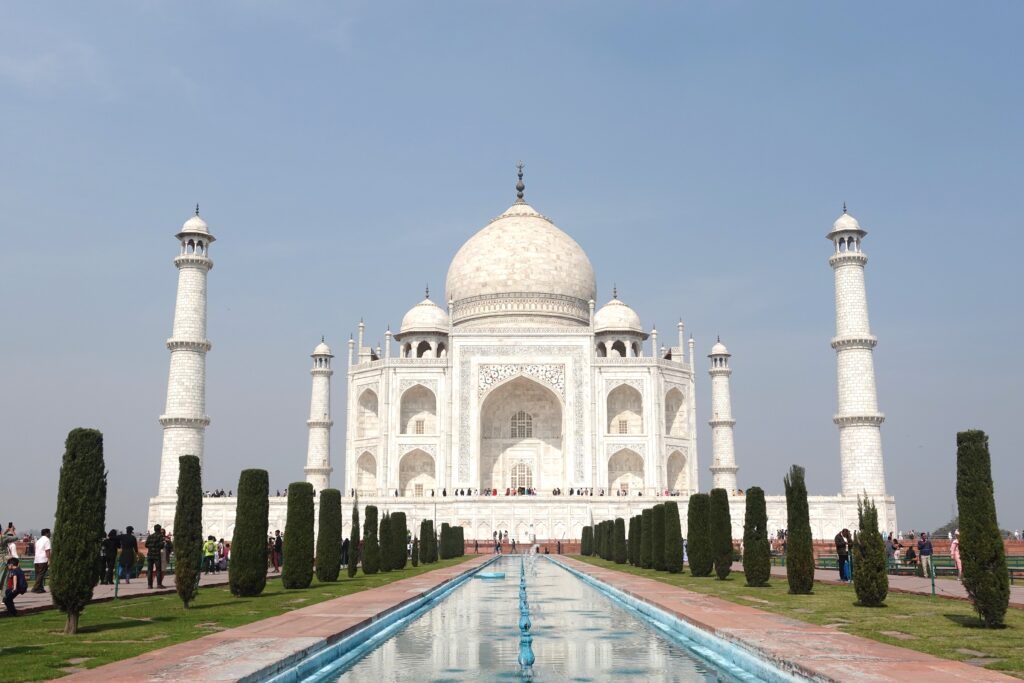
Buddha lived only about 2,500 years ago. It would be impossible for India at that time, a small country in the middle of nowhere, to have built such a magnificent building. Of course, the standard of living was still overwhelming compared to that of the common people of that time. However, there is a danger of unintentional misinterpretation if we interpret the Buddha's time with our modern sensibilities.
Buddha's palace may be smaller than an ordinary house in modern Japan. Although the plot itself was surrounded by a large area, even the ruins of King Suddhodana's palace were much smaller than imagined. It is unlikely that the palace was built larger than that.
I was also shocked to learn that it was built right in front of King Suddhodana's palace. I had thought that Buddha had built a magnificent palace in the form of a villa in a slightly remote area, where he spent his time in comfort.
However, it is said that all three of Buddha's palaces may have been located in the immediate vicinity. If so, Buddha was always under the watchful eye of King Suddhodana. Since he was originally a prince, he would have been present at political affairs in the palace and public halls since his youth, but his private life was also under constant surveillance. If this is the case, Buddha must have felt extremely suffocated.
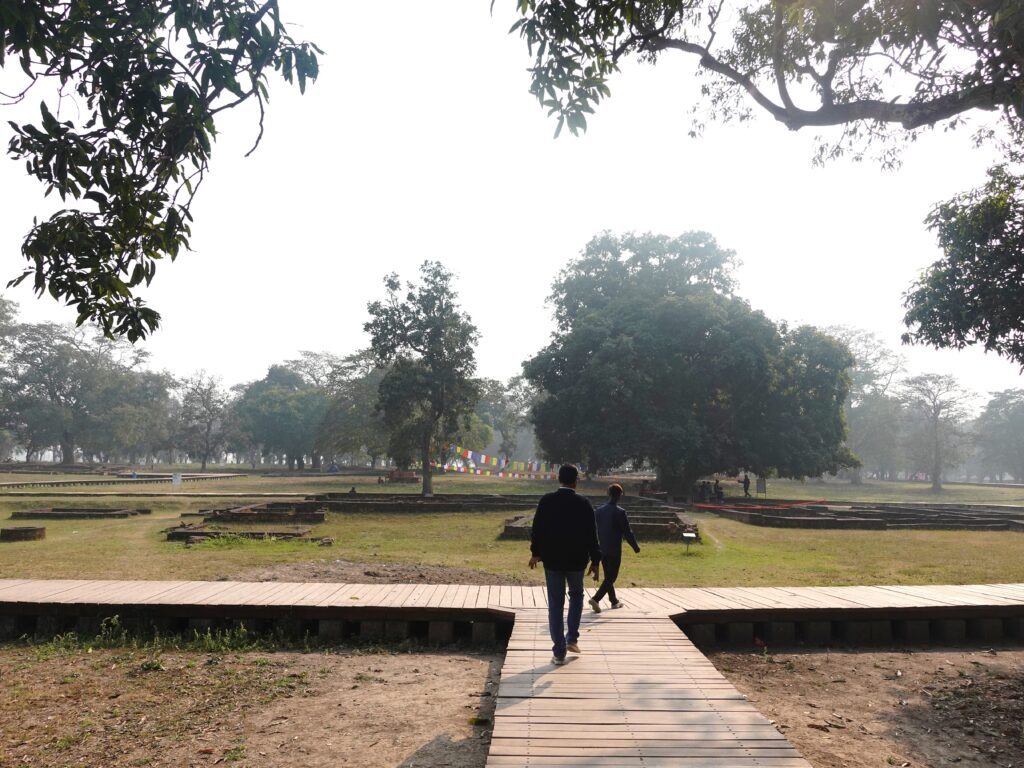
And there is one more thing that I felt while walking through this Kapilavastu.
It is the smallness of this country.
Kapilavastu is a walled town, but its exact size is not known. However, as far as we walked this time, it was about the size of a small park, and the Sudhana and Budda's Palace did not seem that big either.
When I saw the ruins of these buildings, I couldn't help but think, "I knew it...!" I could not help but think, "So that's what this is all about!
As I mentioned earlier, Buddha refused to succeed to the throne of this country. This was born, first of all, out of religious concerns, but it is also possible that he had given up on the country's future in the first place.
It is often said that the Shaka nation was a republic. This may seem like a good, democratic state according to modern values, but in other words, it also indicates the lack of power of the king.
In the 5th century B.C., when the Buddha lived, India was already in a period of warfare between large and small nations. In fact, the Shakha nation was in a master-servant relationship with the neighboring Kosala nation, which was destined to be destroyed later.
Great powers had powerful kings who, because of their power, were able to bring other noble and powerful families under their control.
A republic, on the other hand, may appear to be peaceful and well governed, but in reality, it is a state in which the power struggle within a small country has not yet been resolved. (Even the republicanism and democracy of the French Revolution were fraught with problems.)
However, there is evidence that the Buddha himself preferred a republic to a dictatorship by a king. In the sutras, he preached that "if everyone shares his opinions and respects others, the group will last for a long time. (For more information, see the scripture "Buddha's Last Journey.")
But even so, there is no doubt that King Suddhodana had a hard time dealing with the other nobles. In the previous article.The Kautilya Theory of Reality.The Shaka did not have a disastrous power struggle, as in the case of the Shaka, but power struggles are inevitable among human beings. I imagine that the Shaka nation is more like a confederation of powerful clans than an aristocracy. If even the king's palace is that size, one might naturally guess the power of the Shaka.
Buddha must have observed the reality of these countries in detail.
Even if he succeeded to the throne here, he would still be a king in name only and would have to endure hardships. Moreover, we do not know when a major power will attack us in the meantime. If this is the case, then let us seek the path of human salvation and become ordained...!
It is not surprising that Buddha would think so.
And indeed, it is precisely because Buddha renounced his throne and left the country that the Shaka nation has left its presence in history forever. If Buddha had not become a religious leader, the country would have been destroyed and that would have been the end of it. But Buddha's abandonment of the Shakas, on the contrary, allowed them to remain famous. This is a tremendous paradox.
And don't you all wonder?
They say, "Shaka Nation, Shaka Nation, but what is the name of this country in the first place?"
This has always stuck with me.
Other countries have names, such as the Kosala country, the Magada country, and the Kasi country. But the name of the country of the Shaka people is still not known. It is sometimes described as the Shaka country, but I do not know if that is written in the sense of "the country of the Shaka people" or not.
Anyway, the country of the Shaka is so small that we don't even know its name.
In other words, it was that small and weak.
Buddha was born in such a country. He may have seen the end of the world calmly even before he was ordained, since he was the one who later realized the truth of the world. In fact, he could only watch as his country was destroyed.
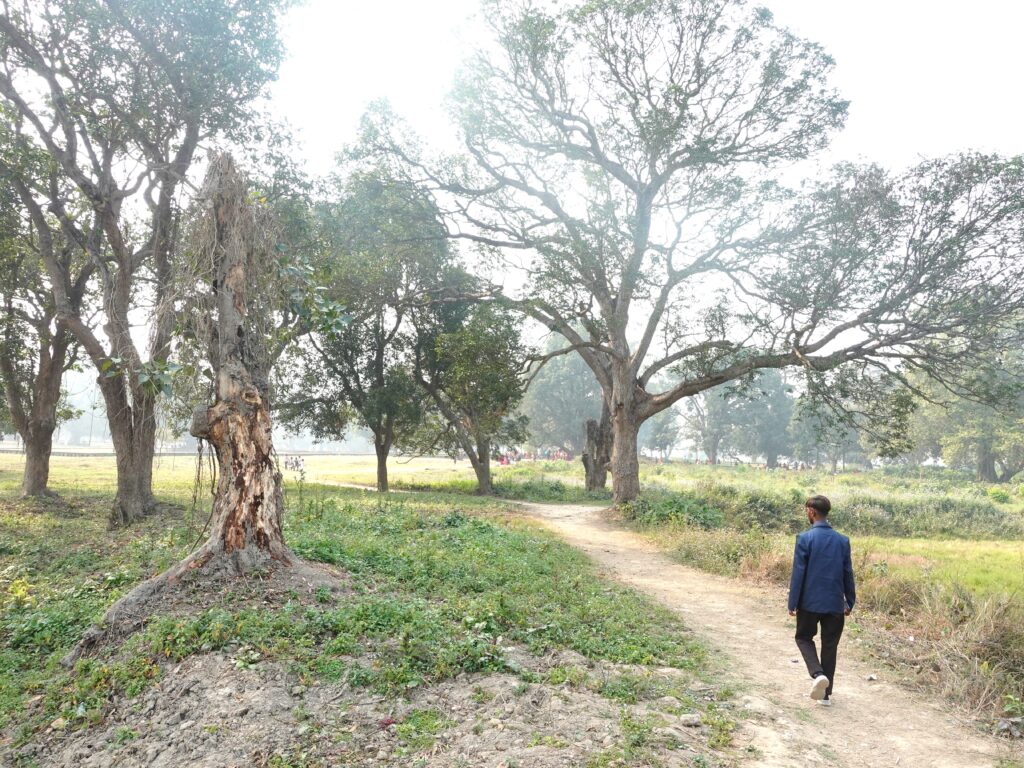
I think about many things as I walk the grounds where the young Buddha would have walked.
Buddha spent his youth here.
As I told you above, King Suddhodana tried to give Buddha an unencumbered life and keep him around.
Even with all the beautiful music, beautiful dances, and delicious food, Buddha was not satisfied.
Perhaps it is due to Buddha's originally introspective and contemplative nature, but it still seems astonishing to us that he was not attracted to these things.
But perhaps there were also feelings for his late mother. Seven days after giving birth to him, Buddha's mother Maya passed away. In other words, Buddha may have felt a sense of guilt that his mother had died because of his birth.
Mahāpājāpati, Maya's sister who became his foster mother, must have raised Buddha with kindness. However, it is also possible that because of her kindness, she felt a growing sense of attachment to her mother, whom she never got to meet. It should not be overlooked that there is a legend that Buddha ascended to heaven to see his mother and gave a sermon to her.
Perhaps Buddha was more sensitive than most people. What other people may think, "What are you thinking about for so long?" can be a life-determining matter for a sensitive person.
It is hard to imagine how much weight such a person must have felt that his mother had died because of his birth.
And from there, it was only a matter of time before it led to the fundamental questions of life: "Why did my mother die and I live?" and "What is life, what is this world, where did I come from, and where am I going?
*Below is an article with reference books on India and Sri Lanka that we have referenced in this travelogue. Please refer to them.
periodA list of recommended reference books to help you learn about Indian history, religion, and culture."
periodA list of recommended books for "those who want to know more about Indian Buddhism."
periodA list of recommended books to help you get to know the Buddhist country of Sri Lanka."
Next Article.
Click here to read the previous article.
Related Articles











